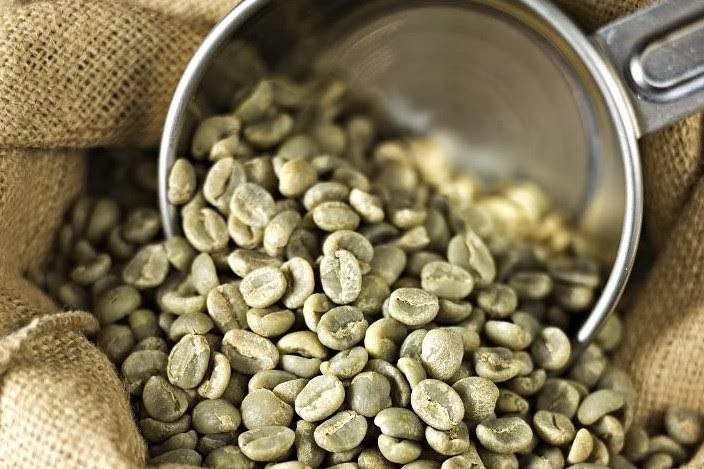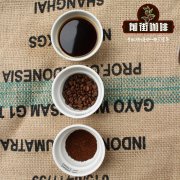How to buy high-quality coffee raw beans? How to judge the quality by observing the appearance of raw beans?
Professional coffee knowledge exchange more coffee bean information please follow the coffee workshop (Wechat official account cafe_style)
Raw bean sellers (coffee farmers, raw bean processing plants) must be responsible for the grading of coffee beans before they are sold to buyers (importers, brokers, bean merchants). Once the classification is completed, the two grades of coffee beans, "Exceptional" and "Specialty", will still have some small shortcomings that are not included in the classification, but have a great impact on the performance potential of a coffee bean. From the appearance of raw beans, we can know the meticulous degree of processing of a bean. Although cup testing is the most accurate rule, appearance is usually a good way to judge.

Notes for observing the appearance of raw beans:
1. The size of raw beans should be very similar, 17x18 mesh, 15x16 mesh, 13x14 mesh, and so on. The appearance is as consistent as possible, and the color is similar. These items determine the color uniformity after baking and the difference in taste after baking. Beans with smaller grains and beans with larger particles are baked at the same time, resulting in an uneven baking degree and uneven taste in the cup. The uneven color of raw beans is attributed to the problem of drying process, and the uneven appearance is caused by the mixing of beans from different tree species.
two。 It is determined that coffee farmers and processing plants are divided into batches according to the geographical growth areas and tree species of coffee trees. These batches should be harvested separately, processed separately, tested in different cups, and then mixed and stored in proportion.
3. Washed coffee beans, the appearance of green uniform and glossy, there should not be uneven chromaticity or dull color. If this is the case, there must be something wrong with the drying process or the treatment process. If the color of raw beans is dull, the taste will also be dull.
4. Learn the details of the manor's procedures for handling raw beans. If the estate puts a lot of effort into the processing process to ensure that the raw beans are properly dried, these efforts will be reflected in the cup. Improper use of the dryer, using the dryer to dry quickly will make the appearance of raw beans dull or brown; the appearance of raw beans has spots, it may be because the drying process is too fast, or the thickness is too thin in the sun, or the speed of using the dryer is too slow. It is recommended that the raw beans are first exposed to the balcony to dry the skin, and then transferred to the dryer, and finally take out the balcony exposure to do the final drying procedure, I believe this practice will help to help uniform color. Put the shell beans in the dryer at regular intervals, and then put them back into the warehouse for storage, so that the moisture content of the beans will be more consistent, which is very important because the moisture content on the outside of the beans must be different from that on the inside. First ask about the temperature used to dry beans. If the temperature exceeds 42 degrees Celsius, the cup may show more "baked flavor" and "dull".
5. Learn about "processing time". Make sure that the beans are sent to the processing plant as soon as they are harvested, otherwise you may get a cup of overfermented coffee, because as soon as the beans are picked, they begin to ferment. Then learn how to use the fermentation tank, and "will you pick out the beans floating on the water?" After the de-mucosal procedure, do they put them in different sinks according to the hardness of the beans? "only manors that spend a lot of time and effort on quality improvement will understand the importance and necessity of these steps. If the de-mucosal procedure and washing treatment are carried out in the same tank at the same time, there will usually be some brown color on the surface of raw beans, and the same will happen on treated overripe beans.
6. Dried raw beans are usually covered with brown silver skins. In Brazil, people call this situation "Fox Bean" and do not list defective items. Generally, novice beans will be considered as a defect, but if these beans are rubbed slightly with a sieve, the silver skin will fall off, so this is not a flaw. Immature beans will also have silver skins attached to the surface, but rubbing like the former cannot remove the silver skins. In the washed beans, "Fox Bean" shows a higher acidity, more fruity aroma, and sometimes more Rio flavor. The trend of the taste must be judged by drinking, not by visual observation.
7. "is there a pink silver cover in the cracks or on the surface of the beans? "this phenomenon is regarded as a great defect, but most people will ignore it because this item is not listed as the defective bean standard in the coffee bean grading system, so this kind of coffee beans may be classified as" Specialty "and go into the hands of buyers. Beans with this kind of situation had better be tested separately from other beans to know whether the degree of defect is serious.
8. "is it white or dark around the raw beans? "the reason is the lack of drying time, or the storage environment is too wet, the performance in the cup is the taste of empty, very boring taste. Whitening around beans can also occur in beans where the drying process is uneven, meaning that one side of the same bean is dried. The causes of whitening of beans are oxidation, contact with the ground, or pollution by sewage.
9. Smell raw beans. Excessive fermentation or soot contamination can be found at this time, and these flavors may become imperceptible after baking.
10. How does it feel to grab a handful of raw beans? If they feel brittle, like glass, they may be too dry or too hot to dry. If you feel too soft and may not dry enough, you must return the beans immediately, because the raw beans under this moisture content are very easy to mildew.
Content source: buoyant coffee
END
Important Notice :
前街咖啡 FrontStreet Coffee has moved to new addredd:
FrontStreet Coffee Address: 315,Donghua East Road,GuangZhou
Tel:020 38364473
- Prev

Hawaiian boutique coffee Kona Manor introduction: Horadadi Coffee Manor
Professional coffee knowledge exchange more coffee bean information please follow the coffee workshop (Wechat official account cafe_style) Hawaii is the largest island in the Hawaiian archipelago, so it is also known as the theBigIsland. Kona coffee is produced in the western and southern part of the Kona region of Hawaii, and coffee trees are scattered in Hualalai and MaunaLo.
- Next

Columbia boutique coffee farm introduction: Bishop Mountain Farm
Professional coffee knowledge exchange more coffee bean information please follow the coffee workshop (Wechat official account cafe_style) Colombian Ulla Coffee and Bourborn Coffee, almost every year in the Coe Cup test and the National Cup test score of more than 95 points. In particular, the specially selected beans are neat and homogeneous, with the same particle size. Because the Bishop of Colombia
Related
- Does Rose Summer choose Blue, Green or Red? Detailed explanation of Rose Summer Coffee plots and Classification in Panamanian Jade Manor
- What is the difference between the origin, producing area, processing plant, cooperative and manor of coffee beans?
- How fine does the espresso powder fit? how to grind the espresso?
- Sca coffee roasting degree color card coffee roasting degree 8 roasting color values what do you mean?
- The practice of lattes: how to make lattes at home
- Introduction to Indonesian Fine Coffee beans-- Java Coffee producing area of Indonesian Arabica Coffee
- How much will the flavor of light and medium roasted rose summer be expressed? What baking level is rose summer suitable for?
- Introduction to the characteristics of washing, sun-drying or wet-planing coffee commonly used in Mantenin, Indonesia
- Price characteristics of Arabica Coffee Bean Starbucks introduction to Manning Coffee Bean Taste producing area Variety Manor
- What is the authentic Yega flavor? What are the flavor characteristics of the really excellent Yejasuffi coffee beans?

